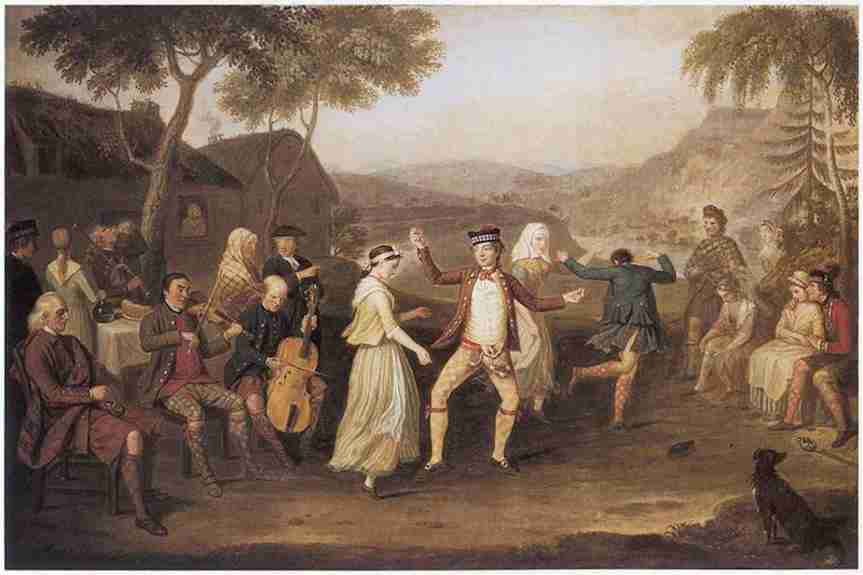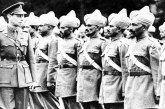
Weddings today are big business. It’s all too easy to get wrapped up in the extreme drama with merchandise and family, but way back when our ancestors were young and in-love, they went about a different means of confirming then celebrating their nuptials.
The following piece is taken from History of Washington County : from its first settlement to the present time : first under Virginia as Yohogania, Ohio or Augusta County until 1781 : and subsequently under Pennsylvania; with sketches of all the townships, boroughs, and villages, etc. : and to which is added a full account of the celebrated Mason and Dixon’s Line, the Whiskey Insurrection, Indian warfare, tradition and local historical events by Alfred Creigh, pub. 1871, pages 50-53.
(And that, my dear reader, its probably the longest title of any book in the world.)
I would say that the following account was mostly Scot and/or Irish in origin, given that the people who settled the area were from Ulster or Scotland and would have taken place between 1770-1800.
In connection with the church, I shall add a sketch of an old-fashioned wedding party, from the rare work of Rev. Dr. Dodridge such as was practised by the first settlers.
When neighborhoods became in some degree settled, and boys and girls had grown to manhood and womanhood, mutual love resulted in marriage, which was celebrated different from weddings of the present day. An eye-witness and a participant gives the following flowing description of a wedding day among our early settlers: —
In the morning of the wedding day the groom and his attendants assembled at the house of his father for the purpose of reaching the mansion of his bridge by noon, which was the usual time for celebrating the nuptials, which for certain must take place before dinner.
Imagine the assemblage of people, without a store, tailor, or mantua-maker within a hundred miles, and a assemblage of horses without a blacksmith or saddler within an equal distance. The gentlemen dressed in shoepacks, moccasons, leather breeches, leggings, linsey hunting shirts, and all home made. The ladies dressed in linsey petticoats and linsey or linen bed-gowns, coarse shoes, stockings, handkerchiefs, and buckskin gloves, if any. If there were any buckles rings buttons, or ruffles, they were the relics of old times, family pieces from parents or grandparents. The horses caparisoned with old saddles, old bridles or halters, and pack-saddles, with a bag or blanket thrown over them. A rope or string as often constituted the girth as a piece of leather.
The march, in double file, was often interrupted by the narrowness and obstructions of our horse-path., as they were called, for we had no roads, and these difficulties were often increased, sometimes by the good and sometimes by the ill-will of neighbors, by felling trees and tying grape-vines across the way. Sometimes an ambuscade was formed by the wayside, and an unexpected discharge of several guns took place, so as to cover the wedding party with smoke. Let the reader imagine the scene which followed this discharge, the sudden spring of the horses, the shrieks of the girls, and the chivalric bustle of their partners to save them from falling. Sometimes, in spite of all that could be done to prevent it, some were thrown to the ground. If a wrist, elbow, or ankle happened to be sprained, it was tied with a handkerchief, and little more was thought or said about it.
Another ceremony took place before the party reached the house of the bride. When the party were about a mile from the place of their destination, two young men would single out to run for the bottle of whiskey, the worse the path, the more logs, brush, and deep hollows, the better as these obstacles afforded an opportunity for the greater display of intrepidity and horsemanship. The start was announced by an Indian yell, logs, brush, muddy hollows, hill and glen, were speedily passed by the rival ponies. The bottle was always filled for the occasion, so that there was no use for the judges, for the first who reached the door was presented with the prize, which which he returned in triumph to the company. On approaching them, he announced his victory over his rival by a shrill whoop. At the head of the troop he gave the bottle first to the groom and his attendants, and then to each pair in succession to the rear of the line, giving each a dram, and then putting bottle in the bosom of his hunting shirt, took his station in the company.
The ceremony of the marriage preceded the dinner, which was a substantial backwoods feast of beef, pork, fowls, and sometimes venison and bear meat, roasted and boiled, with plenty of potatoes, cabbage, and other vegetables. During the dinner, the greatest hilarity prevailed, although the table might be a large slab of timber hewed out with a broadaxe, support by four sticks set auger holes, and the furniture, some old old pewter dishes and plates, the rest, wooden bowls and trenchers ; a few pewter spoons such battered about the edge, were to be seen at some tables. The rest were made of horns. If knives were scarce, the deficiency was made up by the scalping knives, which were carried in sheaths, suspended to the belt of the hunting shirt.
After dinner the dancing commenced, and generally lasted till the next morning. The figures of the dancers were three and four handed reels of square sets and jigs. The commencement was always a square four, which was followed by what was called jigging it off, that, two of the four would single out for a jig, and were followed by the remaining couple. The jigs were often accompanied with what was called “cutting out,” that is, when either of the parties became tired of the dance, on intimation, the place was supplied by ome one of the company without any interruption of the dance. In this way a dance was often continued till the musician was heartily tired of his situation. Towards the latter part of the night, if any of the company, through weariness, attempted to conceal themselves for the purpose of sleeping, they were hunted up, paraded on the floor, and the fiddler ordered to play “hang out till to-morrow morning.”
About nine of ten o’clock a deputation of the young ladies stole off the bride and put her to bed. In doing this it frequently happened that they had to ascend a ladder instead of a pair of stairs, leading from the dining and ball-room to the left, the floor of which was made of clapboards lying loose and without nails. This ascent one might think would put the bride and her attendants to the blush, but as the foot of the ladder was commonly behind the door (which was purposely opened for the occasion), and its rounds at the inner end were well hung with hunting shirts, petticoats, and other other articles of clothing, the candles being on the opposite side of the house, the exit of the bride was noticed but by few.
This done, a deputation of young men in like manner stole off the groom, and placed him snugly by the side of his bride. The dance still continues, and if seats happen to be scarce, which was often the case, every young man when not engaged in the dance was obliged to offer his lap as a seat for one of the girls, and the offer was sure to be accepted. In the midst of this hilarity, the bride and groom were not forgotten. Pretty late in the night some one would remind the company that the new couple must stand in need of some refreshments. Black Betty, which was the name of the bottle, was called for, and sent up the ladder. But sometimes black Betty did not go alone. I have many times seen as much bread, beef, pork, and cabbage sent along with her, as would afford a good meal for a half dozen hungry men. The young couple were compelled to eat and drink more or less, of whatever was offered them.
In the course of the festivity, if any wanted to help himself to a dram, and the young couple to a toast, he would call out, “where is black Betty? I want to kiss her sweet lips.” Black Betty was soon handed to him, then holding her up in his right hand, he would say, “Here health to the groom, not forgetting myself, and here’s to the bride, thumping luck and big children.” This, so far from being taken amiss, was considered as an expression of a very proper and friendly wish, for big children, especially sons, were of great importance ; every big son being considered as a young soldier.
It often happened that some neighbors or relations not being asked to the wedding took offence, and the mode of revenge adopted was that of cutting off the manes, foretops, and the tails of the horses of the wedding company.
On returning to the infare, the order of procession and race for black Betty was the same as before. The feasting and dancing often lasted for several days.




